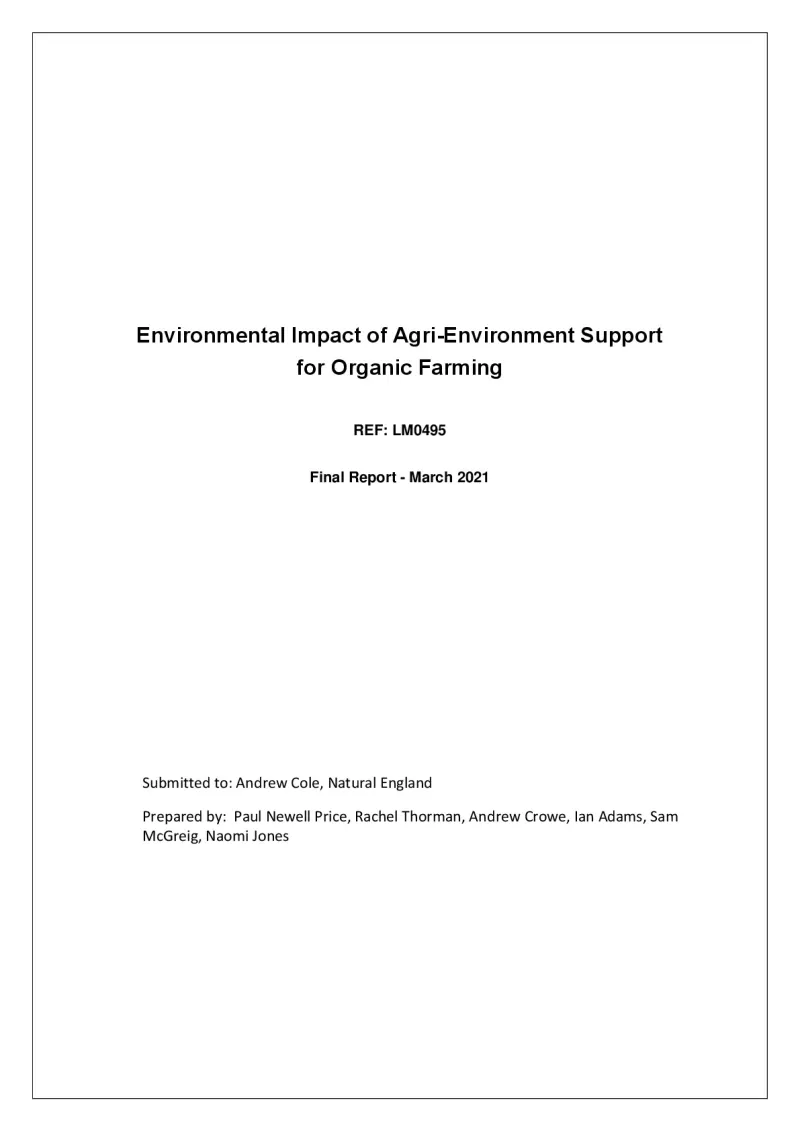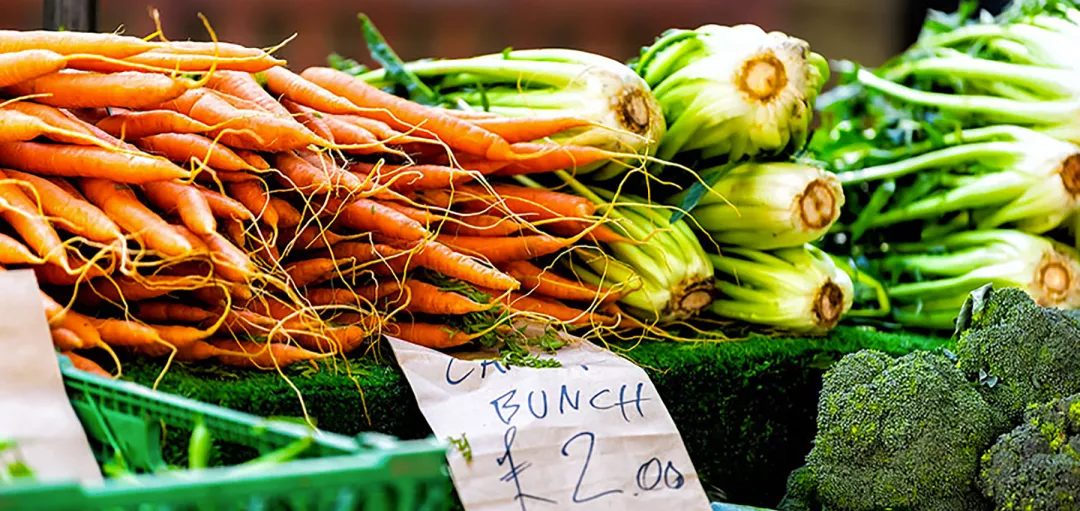Impact of agri-environment support for organic farming
The aims is to assess the feasibility of monitoring the impact of agri-environment support for organic farming in England.
- Other
- 2014-2022
- Environmental impacts


The main objective was to assess the feasibility of monitoring the impact of agri-environment support for organic farming, specifically on soil quality, water quality and landscape.
The Agri-Environment Scheme (AES) support for organic farming was assessed by developing five evaluation questions and mainly through a field survey of 15 paired fields (30 in total) with one field in each pair in the OT3 (Organic land management - rotational land) option and one field with similar soil type not in the OT3 option (the counterfactual field).
In each field, soil samples were taken to assess physical and biological properties, including DNA sequencing technology to assess soil biota. Risk to local surface water quality was also considered through assessment of soil erosion risk, landscape connectivity and observation of erosion features.
Landscape characteristics were assessed through a desk exercise using Land Cover Map 2015 to identify land cover classes and calculate various landscape structure metrics.
Two main limitations have been identified. The first relates to the timing of sampling:
- Soil quality and risks to water quality are best carried out when soils are at field capacity (typically between mid-October and April).
- The ideal timing for sampling of soil biota may be different but will depend upon the investigated species groups.
- A narrow survey window maximises comparability but presents practical challenges and would likely require repeat visits to assess different factors.
The other limitation is that collecting more detailed management information would allow a better interpretation of results.
Despite this, the most relevant conclusions related to specific topics and are as follows.
Regarding field management, most organic sites have been under organic management for 10-15 years. The amount of change required to convert to an organic system varied, but crop rotation had changed at all organic sites. Organic manures were applied on all sites except two conventionally managed fields. Plough-based cultivation was more common under conventional management and insecticides and fungicides were applied respectively to half and all conventional sites. The site management details provided by agreement holders indicated that fungicides had been used at all counterfactual sites in the previous year, and insecticides had been applied at eight sites.
Regarding soil properties, although there were few significant differences in soil chemical properties between management systems, organic matter (loss on ignition) and extractable magnesium were significantly higher under organic management of rotational land (OT3) than conventional. An absence of a significant difference in clay content indicated the successful selection of site pairings based on soil type. There were no management level differences in soil bulk density or soil structural condition (visual assessments or soil dispersion ratio). There were some differences between paired sites in the earthworm counts for the different ecotypes (endogeic and midden counts as a surrogate for anecic earthworms). However, overall, there were no significant differences between OT3 and conventionally managed sites. Vegetation/residue cover was higher under OT3 than conventional management and appeared to be related to differences in cropping.
With regard to water erosion risk, the level of erosion risk was very similar for OT3 and conventional sites, and the degree of erosion risk mitigation due to management was also similar. Most sites had low or very low landscape connectivity, thus the likelihood of eroded soil reaching a watercourse was low. However, scores for good management conditions relating to watercourse protection were higher for sites managed under OT3 than conventional sites.
In terms of soil biome, significant differences between organic and conventional groups were found in the alpha diversity of the bacterial populations but not the other organisms tested. A number of bacterial and fungal species were also found to be significantly associated with organic farming practices. Genetic sequencing recorded no differences in the worm populations between the two farming practice groups.
With regard to the landscape, for two of these clusters, it was only possible to find a single comparable grid cell in the 5x5 neighbourhood, which meant that a statistical comparison could not be made. Across the remaining nine clusters, only one set of landscape metrics for the focal cell showed any significant difference from the landscape metrics for the surrounding conventional cells. For that location, the average parcel size was larger, and the area-to-perimeter ratio was higher, indicative of lower landscape complexity. Ignoring significance testing, there was no consistent pattern across the clusters in the difference between the organic focal cell metrics and metrics for the neighbourhoods. The nine clusters of organic options examined showed metric scores indicative of both higher and lower landscape complexity in focal cells than the mean metric scores for the comparable conventional cells in the neighbourhood.
Author(s)
Natural England